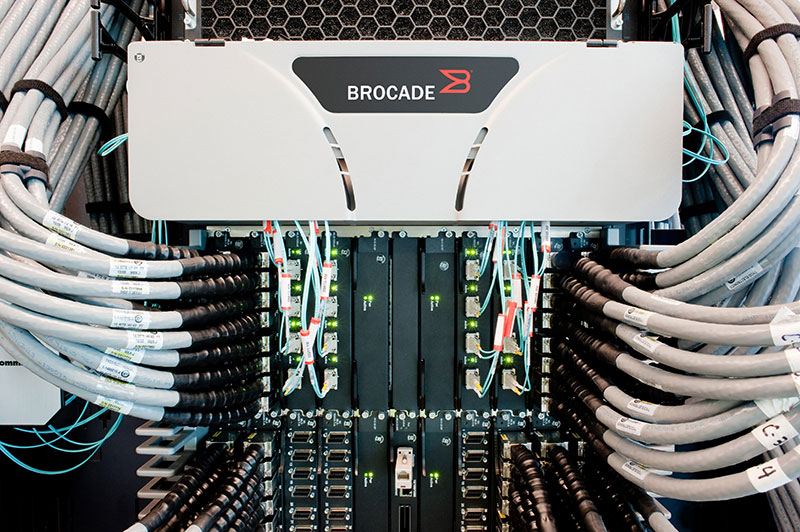Modern life is demanding. Better connectivity means people now want everything on-demand in all aspects of their lives. Businesses have been tasked with keeping up, delivering the products and services required, without compromise, yet the impatience of modern society has trickled over into the use of public services and infrastructure too.
Citizens in modern cities, like London, Berlin or Paris, expect that the services they use will be smarter than ever before, matching advancements in technology. Adding to this demand, more people are moving from rural areas into city environments, concentrating populations in very specific areas, providing an additional challenge to city planners tasked with modernising the city, says Joy Gardham, head of Western Europe at Brocade.
Enter the ‘smart cities’ concept. It is only a matter of time before such responsive, intelligently connected urban environments become a reality. 5G will be here in less than 2 years and commercially available by the end of the decade. Conversation on how this will affect the Internet of Things (IoT) has been relentless and for good reason. 5G will provide us with the opportunity to completely transform our cities, altering daily life as we know it for the better.
But how do we actually make that leap? What can we do to ensure that our transition into smart environments is an ongoing success and our large urban populations are given the support they need? The linchpin to a truly ‘happy ever after’ lies with the often unsung hero of technology: the network.
Road infrastructure: A need for speed
If there is one aspect of a city that needs to be given close attention in order to keep city life running smoothly, its road infrastructure. Thousands of cars on the road at any given time in one location could be a total nightmare if not managed adequately.

The importance of 5G to connected vehicles, a potential solution to that problem, is obvious and well-documented. Lives will be at risk if information is not exchanged quickly enough in all the relevant places. Those ‘relevant places’ could simply mean other connected cars, pedestrians or cyclists with wearables. From a city development point of view, ‘relevant places’ could mean the installation of smart traffic lights that respond to real-time traffic demands, or road signs that respond to variables like weather conditions, road works, and other hazards.
However, such innovations cannot be relied upon without a network infrastructure in place that will support 5G demands and exchange information without potentially life-threatening latency issues. 5G could change our roads forever, but not without a network that can keep pace with their need for speed.
Remote healthcare
How a city approaches healthcare infrastructure could also soon be subject to significant change. Mobile health apps and wearable technologies are already popular and beginning to make a ‘remote healthcare’ concept a welcome reality, removing the issue of ‘location’ when urgent care is needed but patients do not have the time to travel. Hospitals will finally be able to relieve increasing stress on healthcare professionals (HCPs) by reducing the unnecessary time they spend with patients requiring non-urgent care.
Patients will be able to use technology to feel more empowered and informed about their own healthcare by monitoring it themselves more closely, whilst care staff will be able to use the data acquired from continuous monitoring to support informed decisions on treatment.
When planning to put these kinds of concepts into practice, network infrastructure again should be a key priority. Without a superior networking solution in place, hospitals could quickly find themselves inundated with more data than they can handle, putting patients at risk when agile decisions are needed.
The problem shifts from struggling to cope with growing patient numbers, to struggles with data flows. Patients and care staff could also find themselves frustrated if connectivity is an issue when attempting to send data remotely; the implications of which could be obvious if not given due respect.
The New IP: the innovative approach

Looking at just two aspects of city infrastructure that are set to ‘smarten up’ in the immediate future, it is clear that it all cannot work without a fast, scalable and secure network in place. This will become increasingly obvious to wider city planning as it becomes more crucial to support advancements made on connected devices and the IoT.
How can we all prepare? Governments and businesses need to be adopting a New IP approach – a superior approach to networking that offers a more automated, agile and dynamic range of capabilities based on software and virtualisation. Rather than being stunted by outdated legacy networks that only allow so much change, the New IP offers businesses a platform for innovation that means they can change with technology, instead of chasing advancements from ten paces back.
This could not be of greater importance to smart cities. Agile networks with greater performance capabilities will not just mean greater city management and efficiency, it could save lives. The higher threshold a New IP approach offers for what is possible in terms of development, means that networks can be installed as an investment for the future. “We need a new network infrastructure” will not be a phrase uttered amongst city developers for years to come.
The author of this blog is Joy Gardham, head of Western Europe at Brocade
Comment on this article below or via Twitter: @IoTNow_ OR @jcIoTnow










